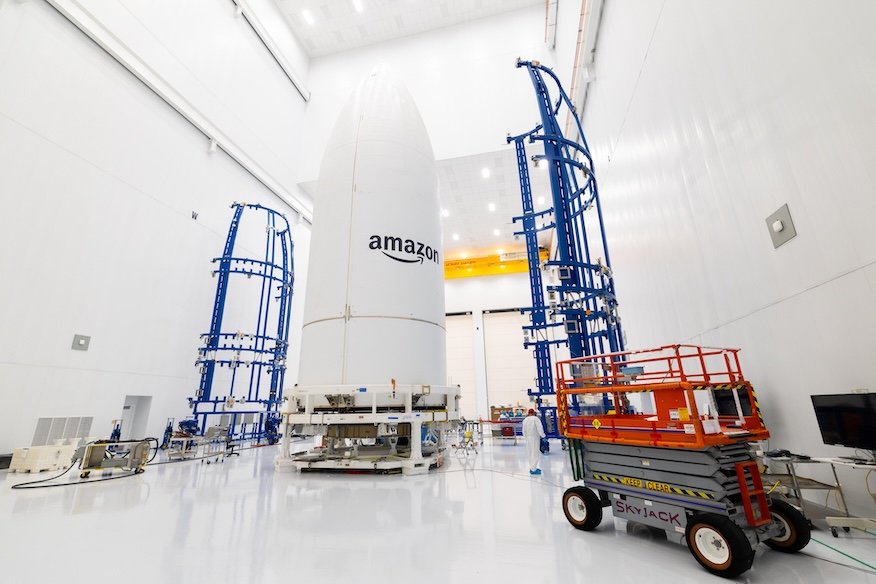In a monumental achievement for the space industry, six orbital rockets were launched from four countries in less than 18 hours, setting a new global record and accelerating the race to dominate low Earth orbit (LEO) broadband infrastructure.
The record-breaking series of launches began on Monday, April 28, 2025, at 4:10 p.m. EDT (2010 GMT), when China’s Long March 5B rocket deployed satellites for its Guowang broadband constellation from Wenchang Satellite Launch Center.
Just 32 minutes later, SpaceX fired a Falcon 9 rocket from Vandenberg Space Force Base in California, carrying 27 Starlink satellites into orbit. This marked just the beginning of a cascade of launches that included major players like Amazon and United Launch Alliance (ULA).
🌍 Space Congestion or Space Progress?
By 7:01 p.m. EDT, ULA’s Atlas V rocket soared from Cape Canaveral Space Force Station, deploying 27 satellites for Amazon’s Project Kuiper, a direct competitor to Starlink. Project Kuiper aims to deploy a constellation of 3,236 LEO satellites to deliver fast, low-latency internet worldwide.
About 3.5 hours later, another Falcon 9 lifted off from NASA’s Kennedy Space Center, launching 23 more Starlink satellites, making SpaceX responsible for half of the day’s missions.
At this point, four rockets had launched in a 6.5-hour window—two from Florida, one from California, and one from China—all focused on expanding internet infrastructure in space.

🌲 Scientific and Technical Ambitions
The following morning, on Tuesday, April 29, two more launches took place. At 5:15 a.m. EDT, an Arianespace Vega-C rocket took off from Kourou, French Guiana, delivering the European Space Agency’s Biomass satellite, aimed at forest monitoring.
Then, at 9:37 a.m. EDT, Firefly Aerospace’s Alpha rocket attempted to carry a Lockheed Martin satellite demonstrator from Vandenberg. Unfortunately, a staging anomaly caused mission failure, resulting in the payload being lost.
📡 The Commercial Broadband Constellation War
This dramatic sequence of launches underscores the rising competition among tech titans like Elon Musk’s SpaceX and Jeff Bezos’ Amazon. With Starlink already operational and serving over 4.6 million customers, Amazon’s Kuiper system—though still in its infancy—is rapidly gaining traction.
Amazon plans to complete the first phase of Kuiper with 578 operational satellites, after which customer service will begin. Analysts predict a $17 billion investment to get Kuiper fully online, along with annual operational costs of up to $2 billion.
Despite skepticism about Amazon’s late entry, there’s potential upside, especially for Amazon Web Services (AWS) and global logistics enhancements.
🛰️ Government & Global Applications
Amazon has also established Kuiper Government Solutions (KGS) to serve military and public safety sectors, partnering with L3Harris Technologies to deliver secure, robust communication infrastructure.
🧠 What This Means
This incredible surge of orbital activity isn’t a one-off—it’s a signal of a rapidly changing space industry. We’re moving toward a future where frequent rocket launches are routine, satellite internet is globally accessible, and nations and corporations alike are investing heavily in space-based infrastructure.
Read more from CNN’s full coverage of the launches and Project Kuiper here:
🔗 CNN – Amazon’s Project Kuiper joins historic rocket launch streak
📝 Final Thoughts
With five successful launches and one partial failure, April 28–29, 2025, will go down in history as the most intense 18 hours in orbital launch history. And it may only be the beginning of a new norm.
Stay tuned—more launches, more competition, and more innovation are on the way.

